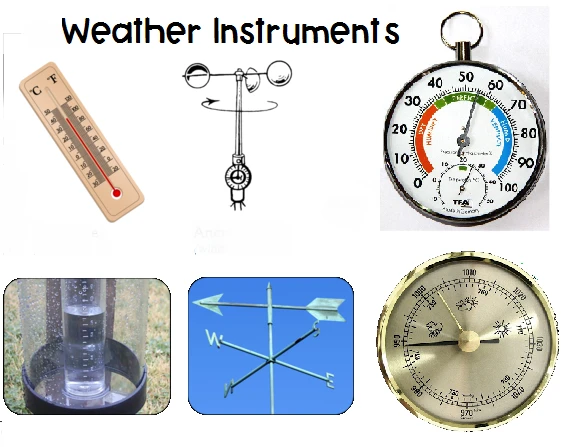
# Weather Instruments: Tools for Measuring Atmospheric Conditions
## Introduction to Weather Instruments
Weather instruments are essential tools used by meteorologists, scientists, and weather enthusiasts to measure various atmospheric conditions. These instruments provide accurate data that helps us understand weather patterns, predict changes, and prepare for potential weather-related events.
## Common Weather Instruments and Their Functions
### Thermometer
The thermometer is perhaps the most recognizable weather instrument. It measures air temperature, which is crucial for understanding current conditions and predicting weather changes. Modern thermometers often use digital sensors, while traditional ones use mercury or alcohol in glass tubes.
### Barometer
A barometer measures atmospheric pressure, which is a key indicator of upcoming weather changes. Rising pressure typically indicates fair weather, while falling pressure often precedes storms or precipitation.
### Hygrometer
This instrument measures humidity – the amount of water vapor in the air. Hygrometers help determine how comfortable the air feels and can indicate the likelihood of precipitation or fog formation.
### Anemometer
The anemometer measures wind speed, an important factor in weather forecasting and for various industries like aviation and shipping. Some advanced models also measure wind direction.
### Rain Gauge
A rain gauge collects and measures the amount of liquid precipitation over a set period. This data is crucial for agriculture, water resource management, and flood prediction.
### Weather Vane
Also known as a wind vane, this simple instrument shows wind direction. Combined with an anemometer, it provides complete information about wind conditions.
## Advanced Weather Measurement Tools
### Weather Balloons
These carry instrument packages called radiosondes high into the atmosphere to measure temperature, humidity, pressure, and wind at various altitudes.
### Weather Satellites
Orbiting satellites provide comprehensive data about weather systems, cloud cover, and atmospheric conditions over large areas.
### Doppler Radar
This advanced technology can detect precipitation, measure its intensity, and track storm movement, providing crucial information for severe weather warnings.
## The Importance of Weather Instruments
Accurate weather data collected by these instruments is vital for:
– Weather forecasting and warnings
– Climate research and monitoring
– Aviation and maritime safety
– Agricultural planning
– Construction and outdoor event planning
– Energy production and distribution
## Maintaining Weather Instruments
For accurate measurements, weather instruments require:
– Proper calibration
– Regular maintenance
– Correct placement (away from obstructions)
– Protection from extreme conditions
– Periodic cleaning
## Conclusion
Weather instruments form the foundation of our understanding of atmospheric conditions. From simple thermometers to sophisticated satellite systems, these tools help us monitor and predict weather patterns that affect our daily lives. As technology advances, weather instruments continue to become more precise, providing better data for forecasting and climate studies.
Keyword: instruments of the weather